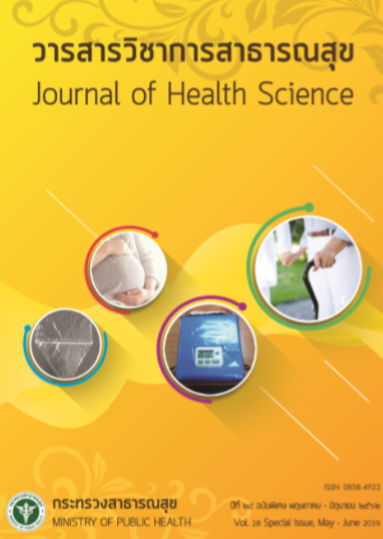Development of Curriculum to Enhance Happiness in Nursing College Organization with Aesthetic Conversation Process
Keywords:
curriculum, happy workplace, dialogue, quality assuranceAbstract
This study was a research and development aimed to develop a new curriculum to enhance happiness in workplace for nursing colleges. There were 4 steps in the study. Step 1 involved a study the concept of happiness in work, quality of life, quality of assurance and aesthetics conversation from the literature review, study of factors affecting happiness in working with educational quality assurance of 301 nursing instructors from 15 nursing colleges under the Praboromarajchanok Institute by responding to the questionnaire and studying the problems of working with educational quality assurance by in-depth interviews with 30 experienced quality assurance workers. Step 2 developed and examined the quality of the curriculum using information obtained from the step 1 to draft a curriculum. Step 3 involved a trial of the curriculum by using the one group pretest-posttest design with 36 purposively selected instructors with 10 experiments for 30 hours. Step 4 evaluated the curriculum in the dimension of input, process and output. It was found that the happiness in work was significantly associated with quality of life. factors related to knowledge, motivation, organizational structure, job characteristics, administration, salary and welfare; and the relationships had significant association with educational quality assurance (p<0.01). The guidelines for enhancing happiness in the organization include (1) creating an atmosphere in the organization with positive communication and the empowerment, (2) assuring educational quality by using the Deming cycle (PDCA) and system management, (3) developing quality of life and stress management, and 4) communicating with aesthetic conversation. The curriculum for enhancing happiness in the organization consisted of principles and reasons, objectives, curriculum structure, learning activities, and measurement and evaluation. The curriculum validation approved by the experts found that the curriculum and supporting documents were very appropriate (Mean=4.43, 4.45 SD=0.57, 0.55, respectively). The results of the trying out of the curriculum revealed that the posttest score was significantly higher than the pretest score (p<0.01). Furthermore, learning management analysis found that personnel were happy to work together as a team, listen to others with understanding and quality assurance working with more systems. It was indicated that the curriculum was suitable. The results of the curriculum evaluation was very appropriate. Score of input factors, process and productivity were at a high level (Mean=4.52, 4.25 and 4,52; SD=0.36, 4.25 and 0.38, respectively).
Downloads
Downloads
Published
How to Cite
Issue
Section
License
Copyright (c) 2019 Journal of Health Science - วารสารวิชาการสาธารณสุข

This work is licensed under a Creative Commons Attribution-NonCommercial-NoDerivatives 4.0 International License.







